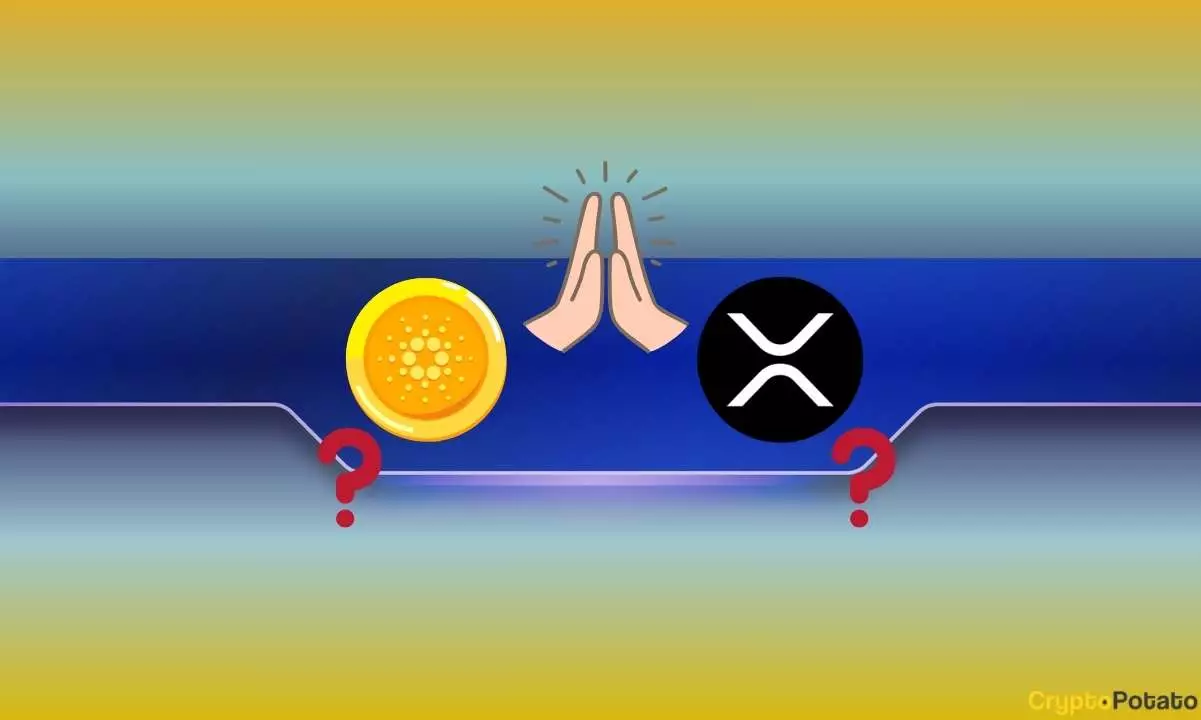Recent discussions between Charles Hoskinson, the founder of Cardano, and Ripple’s CEO, Brad Garlinghouse, have sparked intriguing speculations about potential collaborations in the cryptocurrency sector. Historically, Cardano and Ripple have been seen as competitors in a fiercely competitive market, but recent exchanges indicate a willingness to collaborate in the face of regulatory challenges and evolving market demands. This shift is not only notable but potentially transformative for their respective ecosystems.
Hoskinson’s previous criticisms of the Ripple community raise questions about the motivations behind the recent outreach. As recently as 2022, he referred to the XRP community as “toxic and petty,” leading many to believe that any alliance was unlikely. However, his recent change of tone—expressing a desire to build bridges with Ripple—suggests a more pragmatic approach to the evolving landscape of cryptocurrencies. It reflects an understanding of the current challenges faced by the entire sector, particularly in terms of regulatory hurdles and market legitimacy.
During their conversations, regulatory reform emerged as a potential topic. Hoskinson has publicly stated his commitment to assisting in the development of a more favorable regulatory framework for cryptocurrencies, indicating that both he and Garlinghouse have aligned interests in pursuing dialogue with policymakers. The intersection of their interests could pave the way for coordinated efforts to advocate for more defined rules that benefit the broader crypto community. With Ripple’s ongoing legal battles with the SEC, their joint efforts could amplify their influence in discussions around the future of crypto regulations.
In addition to regulatory discussions, Hoskinson’s dialogue with Ripple CTO David Schwartz seems to indicate a more technical collaboration. The discussions reportedly centered around Cardano’s privacy-focused sidechain, Midnight, which could augment the functionality of Ripple’s existing network. Mutual interest in technology could serve as a foundation for a partnership that blends their innovations, leading to potential advancements in both ecosystems. While details remain sparse, the implications of integrating such technologies could be significant for increasing adoption and usage of both platforms.
The crypto community’s response to this developing narrative has been largely positive, with many expressing enthusiasm over the possibility of cooperation. Should this relationship solidify, it could reignite interest within communities that thrive on collaboration, rather than division. Ultimately, this shift highlights a growing recognition of the importance of unity in tackling common challenges. If both executives can leverage their respective platforms effectively, Cardano and Ripple may not only enhance their own presence but potentially redefine collaborative efforts in the crypto landscape.
While the road to partnership remains uncertain, the dialogues between Hoskinson and Garlinghouse symbolize a critical juncture in the cryptocurrency ecosystem. Emphasizing collaboration over rivalry could lead to more substantial growth opportunities, regulatory successes, and a more robust technological landscape that benefits everyone involved. The evolution of these discussions will be worth monitoring for anyone invested in the future of digital currencies.

